How to fix MMD models? How can I troubleshoot MMD models? How can get help with an MMD model? How can I contact LearnMMD for help?
How to Troubleshoot MMD Models
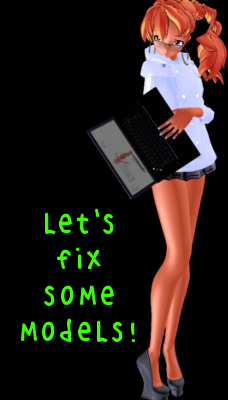
If you ever try to make a model, there’s going to be a time when you run headlong into a wall. Something isn’t going to work right. Guess what? There was a time when none of the LearnMMD authors knew how to do anything with MMD. Just like everyone!
It’s easy to believe that we all know how to think well. After all, like walking, we spend all of our lives doing it. But just like you’re going to need a coach to run at a competitive level, there are a few tricks you can learn to troubleshoot MMD models. And they’re the same tricks you can use to improve your thinking about fixing anything else.
When you do run into a problem, there are four techniques you should use to get through it:
- Research
- Experimentation
- Asking
- … and Waiting
Research
Let me Google that for you. You want to get to the solution as quickly as possible, don’t you? Luckily for you, there are seven billion other people, and the odds are pretty good that one of them has run into the same issue as you. Maybe they’ve already described what you need to troubleshoot MMD models!
Keywords
Just like anything else, searching the web is a skill that you can improve. Googling MMD pictures don’t match isn’t going to give useful results. It’s too vague. Googling MMD texture seams normals is much better, assuming that the problem has something to do with sharp edges in textures and something to do with normals.
The key to Google-Fu is vocabulary. Luckily, it’s not too hard to improve your vocabulary. All it takes is reading. Here, let me Google that for you!
Searching isn’t robotic. It’s empathic and imaginative. Try to think about what words somebody would use if they were answering your question. Imagine being an expert on 3D modelling. Put yourselves in their shoes. What would they say? It’s not necessarily what you would say.
Videos vs Text
I saw a Youtube video tutorial for MMD that said it had a new technique for PMXE that would simplify weight painting. It was ten minutes long. The technique was introduced about five minutes in. And I already knew the technique.
If that video was text instead, I could have figured it out in under a minute. In the time it took me to discover that video wasn’t useful, I could have read about five different techniques.
That’s why I almost always prefer text to videos. Whenever I can choose between a text tutorial or a video tutorial, I always choose the text. That way, I can learn five times as much in the same time!
Even if you find it difficult to read, or perhaps just difficult to read English, consider text tutorials as an investment. The more that you read, the easier it will get.
Tutorials with pictures are even better than text. They’re not like videos, because you can skip around easily and quickly. And pictures are great for finding your way through tricky interfaces.
That doesn’t mean don’t look at videos. It just means use them as a last resort, after you’ve already checked the text tutorials.
Multiple Sources
When you Google, don’t expect the answer to be the first link Google provides. Don’t even expect it to be on the first page. Look at a lot of different pages. For my searches, I usually look at four or five different sources over the first three pages of results.
Experiment
Google didn’t help? That happens. For every solved problem, somebody solved it first without any help from Google. Your problem might be like that. You need to experiment to troubleshoot MMD models.
Experimentation is just focused play. It’s like being a toddler again, seeing which blocks go through which holes. It can be directed or aimless or anything between. But when you have a problem, you want to pick at it from as many different angles as you can.
Simplify
When Galileo tested gravity, he didn’t compare a feather to an anvil. He didn’t drop one weight from his rooftop and one from the Empire State Building. Because he wanted to reduce the number of variables. So he simplified.
And that’s the first thing that you should do with any problem. How can you simplify it? How many parts of your model can you remove before the problem goes away? For example, does your model need physics? Delete all joints and bodies and see if that fixes the problem. Do you have a bone problem? Try deleting other bones and seeing how they affect your problem. Delete delete delete! (Just don’t forget to back up your model first.)
Reproduce– and fail to reproduce
Can you reliably recreate the problem? If not, there might not be any problem at all! If nobody else can reproduce the problem, they’re going to have a hard time fixing it– or if they do, they won’t even know that they did.
So start fresh. Restart your computer. If you downloaded a model, delete it, and download it fresh. Whatever your problem, see if it happens when you do the same thing the second time. I know, there’s that popular definition of insanity. That definition ignores the fact that the definition of science is also doing the same thing, multiple times, with an open mind about getting different results.
Then, look for situations where the problem doesn’t reproduce. That’s going to be key to figuring out what’s happening. If you’re having trouble loading a pose with a model– try it on a different model. Try it on a modified model. Try it in MMM instead of MMD. Try it in as many different ways as possible. Do you have a different computer? Try it on a different computer!
When you can both reproduce the problem with one set of steps, and fail to reproduce it with another set of steps, start blending those steps to identify exactly which steps are associated with the problem.
Different Perspectives
One of the most important things to do to troubleshoot MMD models is to look at it from different perspectives. I’m not talking about rotating the model (although sometimes that’s enough!)
When I get stuck on a problem, I know there are a lot of different ways to investigate the problem. I can look at a morph in MMD. I can look at in the PMXE transform window. And I can look at the morph’s detailed data on the PMXE tabbed view.
But another thing I can do is export the morph to a .csv file and look at that in Excel or a text editor. Recently, doing exactly that helped me solve one user’s problem, by showing me parts of the morph that weren’t apparent even in PMXE.
And there are other ways to look at things. Different display modes in PMXE can show me a lot of problems. I open models up in Blender sometimes. I can create custom effects to make visual defects plain (like by displaying normals, and enhancing contrast). KillerBeer recently solved a problem by looking at a pose file in a text editor. Each of these are different perspectives we can take on problems, depending on where our skills lay.
Another set of eyes
We all make dumb mistakes. We all get stuck with tunnel vision. Sometimes, it just takes a different person to help us notice. There’s no shame in making those dumb mistakes, only shame in being too stubborn to admit them.
If you have any friends that make models or use MMD, those friends are great resources for dealing with problems. Invite them over to take a look. If you’re part of any MMD communities, see if you can post a model file someplace for people to help, or send a private message to one of the members asking if they’d take a look.
Of course, if you want to keep your friends, be a good friend yourself. When it comes to fixing problems, that means putting effort into fixing the problem first, before you ask for help.
Another set of 両目
You don’t always need a friend to get another set of eyes. Whenever you download a model, you’re getting a fresh set! One of the best ways to learn about any problem is to open up a similar model, one that you know works, and see how the modeller solved the problem for that model. Trace out the way that a good model works, by opening it up and examining it in detail, and you should be able to learn enough to deal with your own problem.
“I tried everything!”
When you ask another person to look at your problem, that person will want to know a few things. First, they’ll want to know how to reproduce the problem, in as much detail as possible. You’ve already done that, right?
Another thing they’ll want to know is how you’ve tried to troubleshoot MMD models already– and what those attempts did. That can save them some time. (It’s also proof that you put some work into trying to fix it, so your friends don’t feel like you’re taking advantage of them!)
At LearnMMD, we hear a lot of people say, “I tried everything!” But that’s not an answer. If you really tried everything, then what else can we try? If somebody actually tried everything, and nothing fixed the problem, then the problem cannot be fixed, right?
What people usually mean is, “I tried everything that I know to try.” But we don’t know what you know. That’s why it’s important to be specific about what you tried. If there were ten things you tried, talk about them! If you can’t remember, try again, and keep a pen and piece of paper handy to write down what you tried and what happened.
Wait
Are you still banging your head into the wall? It’s time for the easiest step to troubleshoot MMD models: go to bed. Our problem solving abilities work in strange ways, not always conscious, not always at the pace we’d prefer. The best way to solve some difficult problems is to spend some time not thinking about them.
Sometimes, that means taking a walk and letting your mind wander. Sometimes, it just means getting a good night’s rest. Troubleshooting is like cooking a good stew. It takes longer than you’d like. But you don’t have to be stirring the pot the whole time.
This is not a flowchart
Even though I talked about these problems like they’re four steps to troubleshoot
MMD models, they’re not really. You can do them in any order. And no step is ever complete! You can experiment, wait, experiment, wait, and then research.
Give up?
Did somebody tell you there’s no failure, only death? There’s a reason bushido is dead. If people never gave up, we’d all be stuck on whatever problem we first failed to solve. There comes a time to admit that a problem may be beyond us. That’s okay.
Especially when you get started, you’re going to run into problems that you just can’t solve, no matter how hard you try. It’s okay to give up and do something else instead.
But trying to fix these problems is how we learn– how we gain expertise. And any time you spend in experimentation or research is going to help you become better at making models in the future, even if it doesn’t solve your problem this time.
And you never know! Even when you give up, that problem may sit in the back of your head while you work on other problems. As you gain experience, you may find that you learn what you need to solve the problem you gave up on so long ago. From this perspective, there’s no such thing as giving up– it’s just an extended waiting period.
Contacting LearnMMD
Remember when I talked about the value of an extra set of eyes? If you’re still having difficulty, you can contact us at LearnMMD. We can help you troubleshoot MMD models!
Just as with any other friend, if you want to stay on our good side, we expect that you’ve put some work into the problem before hand. That includes all of these other techniques: some experimentation, some research, and sleeping on the problem for at least one day. Solving problems isn’t easy for us, either, so put the work in yourself first.
And we’ll want to know everything that any other friend would want to know. How can we reproduce the problem? And what, specifically, did you try to do to fix it? Not, “I tried everything!”
Show me the model!
If you need help to troubleshoot MMD models, we’re probably going to need the model to figure out what’s happening. Screenshots are not going to be good enough. There are a number of hosting sites where you can upload your model– try Mega, Dropbox, or Mediafire. If you’re using something that shouldn’t be redistributed, provide us a public link (not one that requires a password or registration or else we probably can’t get the model!) Remember, you can write the model author to request special permission to redistribute. Tell them you want to send it to LearnMMD for troubleshooting help. Most modellers will happily give permission for that.
Maybe you’re working on a model yourself and don’t want it to be redistributed. Remember, if you’re running into a problem that you can’t solve, you probably need to improve before people will want to use your model in the first place. And if you’re asking for help, it’s a good reminder that modelling is a group effort where we all pitch in, rather than a situation where any single person could claim exclusive credit. I feel much more comfortable helping when people intend to share their model with everyone. However, you can still be sure that we won’t use your work-in-progress in our own work without asking your permission. We’ll happily delete it when we’re done. (I have way too many models anyways, I can’t even keep track anymore!)
So if you still need help to troubleshoot MMD models, feel free to write ReggieDentmore@aol.com with a link to your model, a description of the problem and how to reproduce it, and the steps you’ve already tried.
Troubleshooting links
Just as with everything else, people have already put the work into learning how to learn. And for more useful information about the techniques people use to fix anything, check out Art of Troubleshooting or Universal Troubleshooting Process.
Keep the Faith and credit your sources! I’m using my own Tda 0401 Bliss, wearing edited versions of UnluckyCandyFox’s MMD Coat and SkinnyMandria’s shoes from Shoe Pack 1! For accessories, I used my own laptop, glasses, and chair models.
– SEE BELOW for MORE MMD TUTORIALS…
— — —
![]()
– _ — –

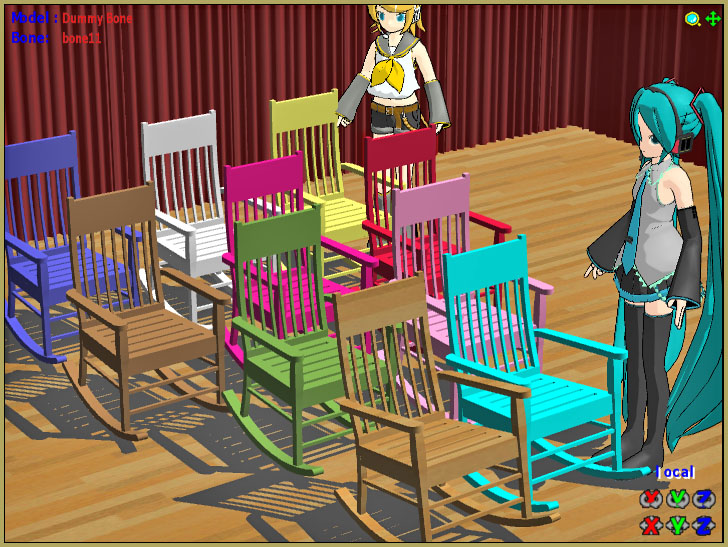



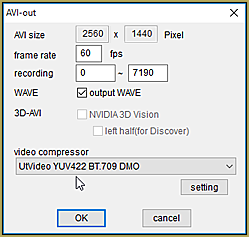
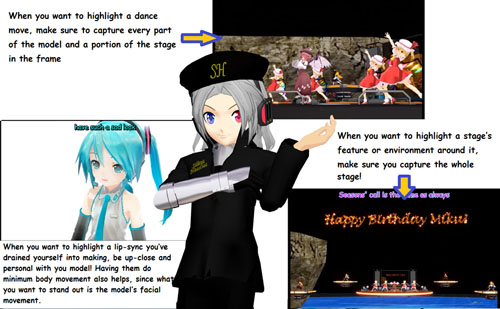


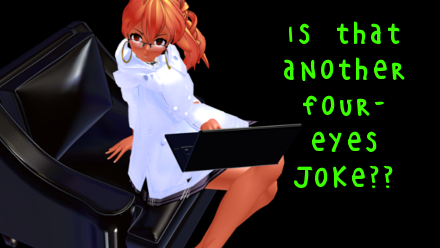
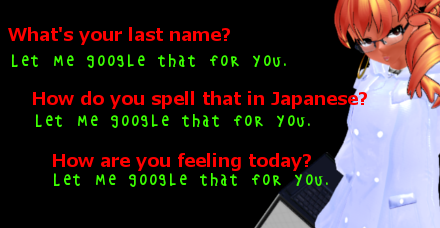

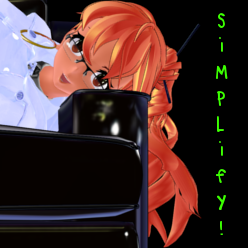
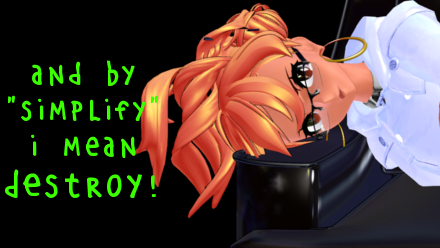
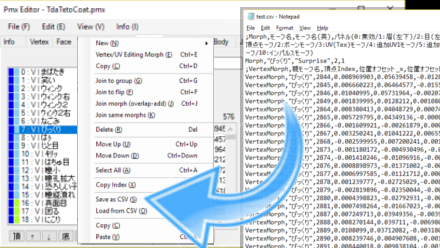

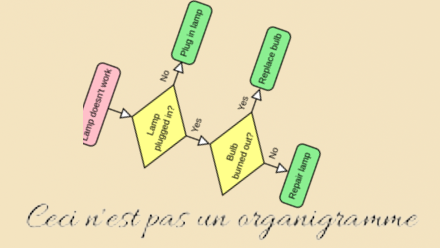


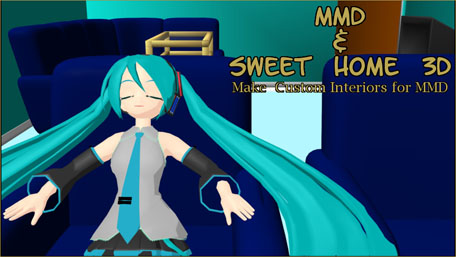

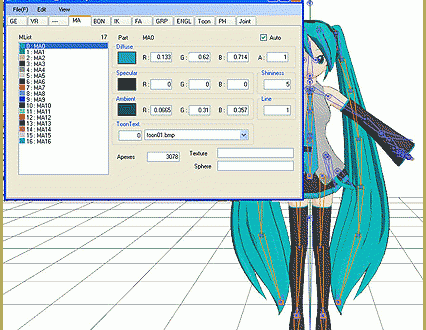

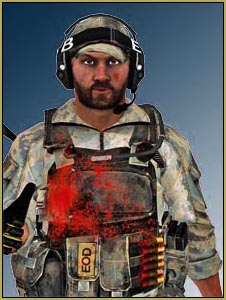

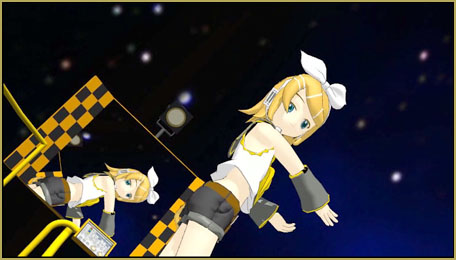
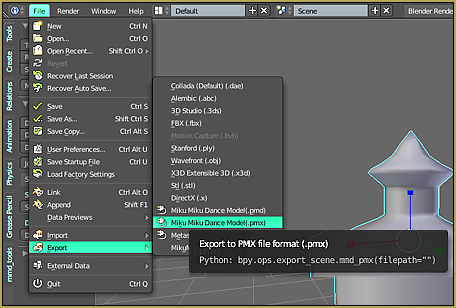


Hello,
Can I please get some advice about one single problem I have. It seems to me like a small problem but the thing is, I don’t know where the problem is. To explain, I used a guide and a lot of tutorials to learn some more capable stuff in pmx editor. I figured a certain great guide consisting of 3 videos will teach me to get the idea of how to handle what I want to do. Anyway this is this guide, the most important video for me is part 3 so here is the link for it: https://www.youtube.com/watch?v=h-sJ2kmZgxI
And now, here is a description of what I wanted to do: I have two models by the same author/creator. “Model 1” and “model 2”. “Model 2” has a hat. I took the hat from “model 2” and put in on “model 1”. (Note: The hat on “model 2” is a separate mesh with its own bones, connected with “model 2” via bones. It stays perfectly still on its head when in motion and does not jerk at all.) Everything went smoothly, I had a “model 1” with the hat on, 100% looking sweet and visually a perfect fit. But, when I loaded a simple dance motion onto the model in MMD, guess what happened, the model started moving but the hat stayed in place hovering without moving, at the same place where it was on the models head when I loaded the model.
I’m really stuck because I can’t understand what should I do? What am I missing? It seems to me like bone connection issue, but the pmx editor said there was no issues on the scan. Also, I have not edited the character model that the hat went on. I only put the hat on it. (To repeat, both the model and the other model whose hat I took are made by the same modeller. He allows editing but not redistributing so I don’t think I can share the models, sorry.) This is the best description I can give.
The bones of the hat which are displayed in mmd, are: “other/hat”
The bones displayed in pmx editor are: “other/hat”.
Now I would first like to wait for a reply from someone more knowledgeable in this than me.
Please give me some advice if you see where the problem is.
Thanks so much in advance!
Best regards, Me.
Hello, Me!
I am no PMXE Expert… but LearnMMD has many model-making artilcles.
Please check out these three by our author: Silent Headset … If you don’t see an answer there, I can “ask around” for you.
Good luck! … let me know…
https://learnmmd.com/http:/learnmmd.com/pmde-qa-making-clothes-follow-model-motions/
https://learnmmd.com/PMDE_Placeholder_image/
https://learnmmd.com/Make_PMD_Model_PMDE/
— Reggie
Thank you so much! Those tutorials look amazing! I’m going to study through them and I’m already sure I’ll fix the issue. I’m really glad I asked here and I really appreciate your replay. If I’ll still have some issue I’ll be back here in a couple of days but I believe everything will go smoothly.
Best regards!
Thank you… good luck!
— Reggie
Hello
I am contacting you as a last hope, I thank you in advance (even if I think my chances are too low)
I am a complete beginner and English (and Japanese) is not my mother tongue, I hope I will be clear
I created a character with vroidstudeo then I converted it to pmx (thanks for learnmmd), despite the fact that I am completely ignorant I managed to “almost” finish all of them
but a “terrible” problem hit me in the face
the “skin” becomes visible under the pants when I add the motion (it’s pants not a skirt so the explanations pmxe etc… are not useful to me )
I created several varieties of characters but the problem is that I can no longer edit them with vroidstudeo (vrm/pmx remain / all .vroid deleted to save space)
When looking for a solution the best subject that comes close to my problem was in learnmmd, this one:
https://learnmmd.com/http:/learnmmd.com/adjust-downloaded-motions-to-fit-your-mmd-models/
This was the best solution if it worked because it just involves modifying the motion
which is perfect for me because I have several character varieties (different hair, clothing etc…) so correcting the motion for all is much easier for me
but it only concerns the limbs but not the clothes (I may not have understood well)
Here is a screenshot of the problem:
https://i.imgur.com/BFe7iDH.png
https://i.imgur.com/0JRIQ6V.png
https://i.imgur.com/nTpN0w1.png
https://i.imgur.com/TW1yum0.png
if it can be useful this is a link for the pmx file and 3 motions files (the problem exists with all 3)
https://mega.nz/file/AbtggYhR#v7P_tVQbaDaNlVqPICVJ18Y94uOWVj1HoR3JvD4kEEc
please if anyone is generous enough to help me,
please please please explain as if you were talking to a child (don’t think that a detail is too obvious, I may not know it)
I thank you in advance and I apologize if there is any inconvenience
THANKS
This kid of question is above my pay grade… but I can find someone to help… hang in there!
— Reggie
Thank you Reggie_Dentmore
No problem, I’m desperate anyway
My post was just a bottle in the sea, I’m not waiting for a real solution :)
(I admit that the only thing that hurt me a little was that I liked the result after a lot of effort, I couldn’t easily accept that I had to let go)
this doesn’t change anything that the mmd community is magnificent and I love your work
(this is a clearer picture of the problem, I’ll take a look from time to time maybe someone will have a solution – if an experienced member changes the motions a little it would literally be a miracle)
https://i.imgur.com/2S9mG26.png
thank you for your response and good luck with learnmmd
Thank you for the kind words… Our author, May Blythe, has a solution for your issue…
That’s actually a really easy fix if you are able to edit PMX files :) you just go into whatever editor you use, and then delete all the parts of the body (hidden by clothes) that are giving you issues. It could be a complex thing with reweighting stuff, but it can be as simple as just deleting the parts that are Popping through! I had to do that with my Camila model all those years ago! It can be done no problem in PMXEditor :3
– Mae
I don’t know if this has happened to anyone else, but after creating my own MMD model with PMXE and importing it to MMD, the only trouble I’m having is that all the bones don’t have their own axes that correspond with them, they just all have the same axes as their root bone. Here’s a screenshot to show you what I mean: https://i.ibb.co/F5M8VkX/bone-axes-problem.png
And first off, yes, I have edited the armature, and yes, there were made of more than one armature so I joined them all. Thanks in advance!
Sorry, no answer for you here. I suggest you search Devian Art as there is a large active model-making community there.
— Reggie
Hello, I’ve tried again and again to put a motion to a model I created like 4 others, put only for this one, it doesn’t work : The model’s name automatically becomes “Null_01” and when I put my motion, the legs aren’t going in place. I don’t understand what’s wrong, because other models work with that motion, and another motion even worked for that model, so I just don’t understand what’s wrong…
I’ll put pictures to show you here : https://ibb.co/TTY2S0N (what it looks like with the “broken” model)
What it’s supposed to look like : https://ibb.co/nQTQGxk
First, the “Null_01” is a sign of untranslated model. Each feature of a model has Japanese and English name fields, and when a model maker does not bother to fill English ones, in English mode respective units become Nulls. You can edit model in PMXE to give it sensible names; for bones, morphs etc. the easiest way would be to use the batch name editor, and the model’s name can be edited in PMXE first “Info” tab.
Second, every motion assumes that certain bones are present in the model, which is not always the case. While certain bones are almost always present in every model, others are added by modelers at their own discretion, and the motion made for a more elaborated model will not necessarily work correctly on a simpler one. From your screenshots, I assume the problem lies somewhere in custom IK leg bones. You can load two models side by side to look which bones each model has.
Okay, thanks for your help !
I saw which bone was missing, sadly I don’t know how to add it, but at least now I know the problem, I’ll try to solve it.
Thanks for helping me !
Well, I don’t know exactly what bone do you miss, but you can check PMXE’s Semi-Standard Bones plugin (if you’re using PMXE 0254f translated version our downloads page recommends, it’s already included in the package). It’s a popular tool, and there’s a fair chance that your missing bone is one of those it adds.
When I try to open a project that has more then one model included, it says “Cannot open Null_00.” and a few more options. This isn’t the problem though. When I try to click on one of the models, it just exits me out of the entire app. Is it because MMD can’t handle loading two models on my device?
These are models you downloaded?… do the file names look like this? éáé-âeâgé¦é±.pmd
MMD may let you load a model with a scrambled name… maybe not. When you save an MMD dance… a .pmm file… MMD may not be able to find that model when you try to open that saved dance.
Use BandiZip to unzip your downloaded files.
Japanese characters are in a unicode that WinZip, and others, scramble. … ALSO… That “Null” issue can be overcome if you translate your MMD models.
Alternately… some models you download may not run on your system. Is your computer set to Japanese locale? … That may help you… I have not done that, myself, but MANY MMDers do that.
So I did everything that I normally do to my models. The center bone attached to the motherbone with child bone being the invisible tail for the center bone. But my motherbone only moves the legs outward. https://www.dropbox.com/s/8zxhhohbcvayue3/Untitled.png?dl=0
What did I do wrong?
Try remaking the motherbone:
Go to the small PMXE window, Edit>Bone>Add Parent
Rename the new bone’s Japanese name to 全ての親
Hey! There’s gotta be something wrong with Tsukasa in her Winter Uniform. She got some bone parenting issues trying to dance to Sweet Magic.
Model:
http://web.archive.org/web/20131126120553/http://121.101.88.32/download/tsukasa.zip
Motion:
https://bowlroll.net/file/155001
I downloaded a model and loaded it into the program but it’s not showing up. Like all the joints and settings are there but i cant see the actual model. Help?
Downloaded models often have “issues”. … What is the link to that model. We can download it and take a look.
2.10 models don’t work in mmd anymore
2.10 models I believe only works in MMM.
To convert a model into 2.0, go into PMXE and open up your model. Go to File>Save Format>PMX>2.0, then save
I downloaded a model base it opens in PMX but it won’t open in MMD I’ll click on it to loud it up it opens MMD but the model is missing it does the same even after I add other parts
You mean you double-click on a .pmd file, and that launches MMD, where you expect to find the model opened? Well, it doesn’t work this way. You start MMD, then use Model Manipulation “load” button to load a model. Any other means to “load” or “open” in MMD serve to load or open something else.